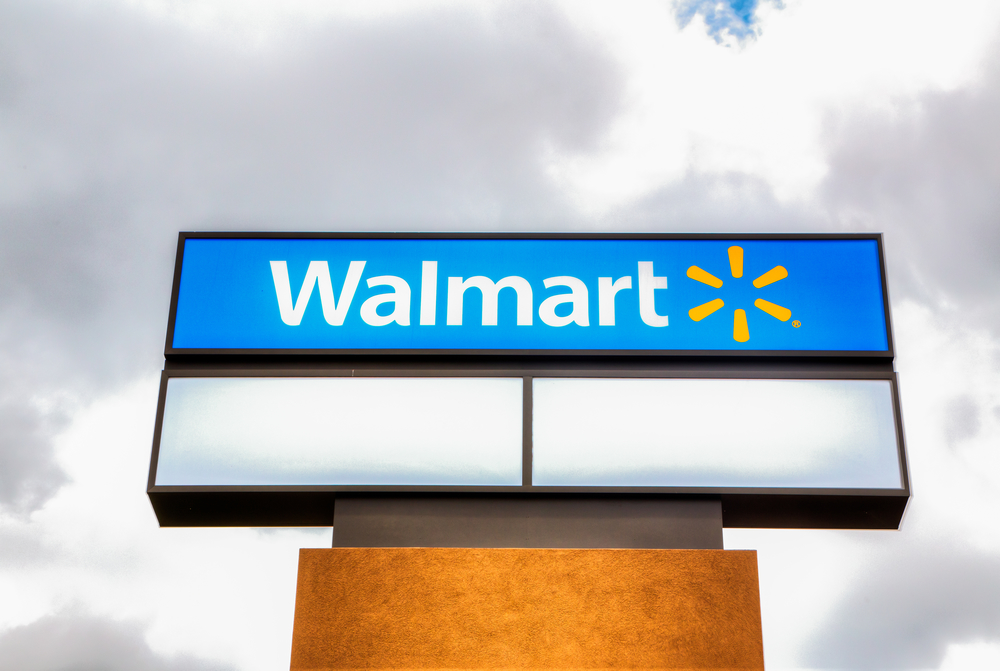When it comes to investing, do you like to take a punt on a hot new growth company? Or would you rather enjoy a stable income stream from a profitable and proven large cap?
Would you rather date a supermodel or the girl or guy next door?
There’re two distinct styles of investing — and room for both in a diversified portfolio.
So when this week’s earnings announcement by Walmart [NYSE:WMT] burned off Amazon [NASDAQ:AMZN] it got me thinking.
Can you have your cake and eat it too?
Can you also get growth from stable income businesses?
Where are those businesses?
First, what’s happening with Walmart?
Walmart is like The Warehouse on steroids. It’s the world’s largest company by revenue, with 2.3 million employees and 11,348 stores encompassing hypermarkets, discount and grocery stores.
The company is still 51% owned by the Walton family.
On Tuesday, it reported stellar earnings, driven by big upswings in grocery and e-commerce sales. Since Christmas, its stock price is up 20%, plus shareholders are in line for their regular dividend cheque.
Contrast this with tech growth star Amazon. Its stock price is also up around 20% over the same period, but there’s been no dividend cheque and arguably a lot more risk.
Look at some of the fundamentals:
|
Walmart Inc. [NYSE:WMT] |
Amazon.com Inc. [NASDAQ:AMZN] |
|
|
Forward P/E ratio |
21.19 |
55.56 |
|
Price/Book |
4.03 |
18.14 |
|
Forward Div Yield |
2.08% |
– |
|
Price/Sales |
0.58 |
3.45 |
|
Beta |
0.64 |
1.71 |
In terms of price you pay for earnings (P/E), Amazon is 2.6x more expensive than Walmart. Based on the book value of assets (P/B), Amazon is 4.5x more expensive.
Then there’s Beta — a measure of volatility compared to the market. We’d expect Walmart to move at only around 64% of market shift. Amazon will move at 171%.
So, technically, Amazon adds quite a bit more risk to your portfolio.
The hare and the tortoise
I like to invest in businesses with real tangible asset backing. Slow and steady investment in quality assets will win the race in the end.
That’s why Walmart has something Amazon can’t catch.
It owns more than 4,700 grocery stores. It already offers pickups at 2,100 locations and has 37,000 personal shoppers who assist with online orders and ‘click and collect’.
With this brick-and-mortar arsenal, Walmart plans to grow grocery deliveries and pickup options to more than 300 US metro areas this year. Amazon does have access through ‘Whole Foods Market’ via Amazon Prime, but that only reaches 60 metros with delivery and 20 with click and collect.
[openx slug=inpost]
Are we tiring of online-only?
We want to touch things, see and socialise with our fellow human beings. That means getting out. Many analysts, however, see brick-and-mortar stores and malls as investment dead zones. And valuations of many of these stocks around the world reflect that.
As of 31 January, there were 15.2 million shares sold short on Walmart. Short sellers bet on the price going down. They’ve gotten that wrong over the last 3 months.
For one of my mall holdings in the UK, New River REIT [LSE:NRR], Price/Book is currently sitting at 0.76. Meaning, at the current share price, you’re getting their shopping mall and pub assets (which make up their balance sheet) at a substantial discount from their registered value.
Yet their malls are anchored on convenience-led retail. The assets (like Walmart’s stores) are an integral part of the communities they serve.
Primark is an anchor tenant at some New River malls, taking over some of the failed BHS (British Homestore) tenancies. If you’ve ever been into Primark, you’ll know what a thriving and very busy clothing store can be like. And I’m told you need to visit the store for that vibe of inspiration.
|
Primark opens in Brussels. Source: Flanders Today. |
Of course, New River is carrying a lot of Brexit risk and uncertainty. However, foot traffic and occupancy are holding up. While we wait for the market to realise the value, a dividend yield of nearly 10% per annum is paid quarterly.
Smaller homes and community hubs
Kiwi homes are getting smaller. My in-laws recently followed a familiar Auckland trend in their retirement age bracket. They sold their house with a yard and moved to an apartment. They’re now on the doorstep of thriving Newmarket. And they’re free to lock up and leave, travel and, of course, shop.
Retirees and younger people have less garden, less floorplan and want to get out a whole lot more.
In Newmarket, Westfield (via Scentre Group) is currently finishing New Zealand’s largest retail development at 277 Broadway, investing $790 million in real brick-and-mortar mall assets.
Westfield itself was delisted from the ASX when it was taken over by European property giant Unibail-Rodamco. It was a deal that gave shareholders a premium of 17.8% on their securities. Unibail-Rodamco is Europe’s largest commercial landlord.
Perhaps some of the quality but beleaguered mall stocks out there are also ripe for takeover.
However, there are also risks with retail assets. You need to look at the location of the assets, their ability to thrive as community hubs, click-and-collect venues and convenience destinations in the fast internet environment. They’re not all created equal.
And there’s a weird following of people with fascinations for dead or ghost malls that have closed, leaving giant, decaying hangars as monuments to once thriving retail.
We’re interested in where and how retail will thrive. And right now, Walmart is flexing the power of its shopping network by linking it to the power of e-commerce.
As they say, ‘Save Money. Live Better.’
Meanwhile, you could live even better by investing well and choosing the girl or guy next door.
Regards,
Simon Angelo
Analyst, Money Morning New Zealand
Important disclosures
Simon Angelo owns shares in New River REIT [LSE:NRR] (via wealth manager Vistafolio).

